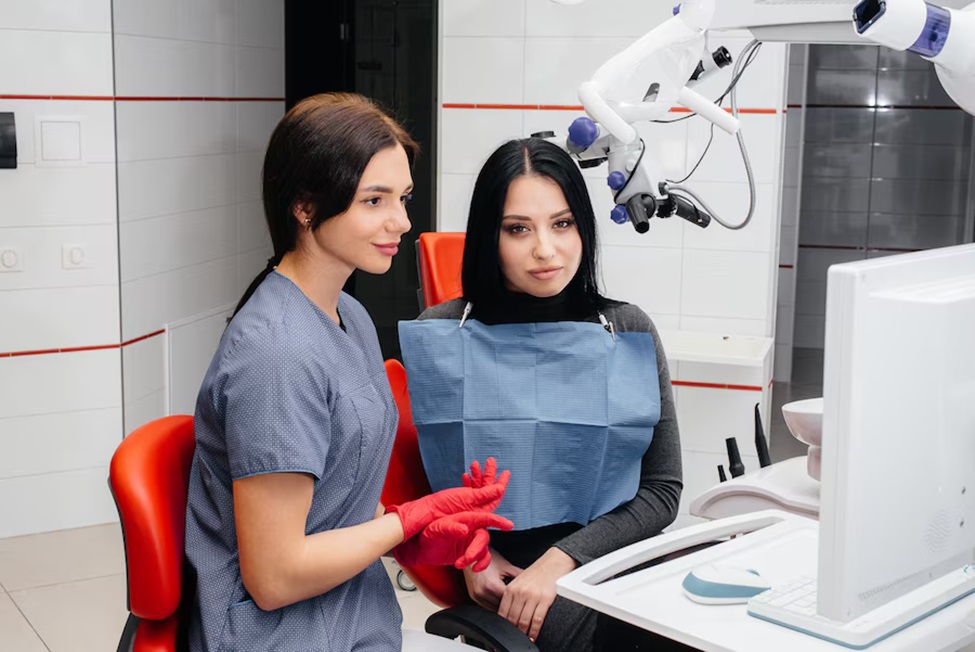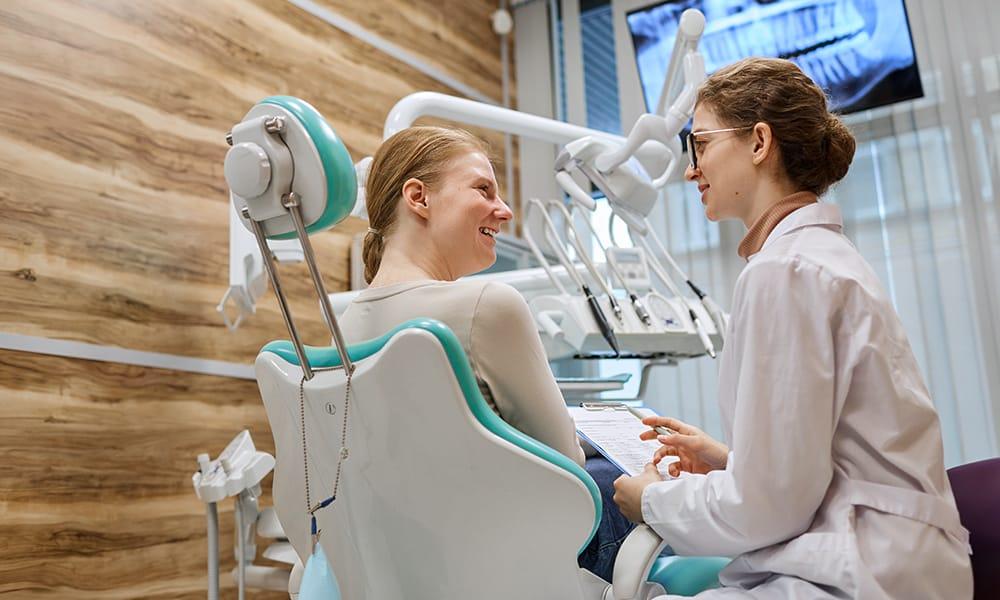Orthodontics is often associated with achieving a perfect smile, but its benefits go far beyond cosmetic improvements. Correcting misaligned teeth, improper bites, and jaw irregularities can have a profound impact not only on your oral health but also on your overall well-being. In this article, we’ll explore how orthodontic treatment can enhance both your dental health and your general physical health, shedding light on the often-overlooked benefits of orthodontics.
1. Understanding Orthodontics: More than Just a Straight Smile
Orthodontics is a branch of dentistry that focuses on diagnosing, preventing, and treating dental and facial irregularities. The most common orthodontic treatments include braces, clear aligners (such as Invisalign), retainers, and other dental appliances that help in aligning the teeth and jaw. While the primary goal of orthodontics is to correct misaligned teeth and bites, it also plays a significant role in improving oral functionality and health.
2. Oral Health Benefits of Orthodontics
Misaligned teeth and jaw issues can cause a range of dental health problems. Correcting these issues through orthodontic treatments can have several positive effects on your oral health:
A. Improved Teeth Cleaning
Crowded, crooked, or misaligned teeth create tight spaces that make it difficult to brush and floss effectively. These hard-to-reach areas become breeding grounds for plaque buildup, which can lead to tooth decay and gum disease. By straightening your teeth, orthodontics can make it easier to maintain good oral hygiene, reducing the risk of cavities and periodontal disease.
B. Reduced Risk of Tooth Decay and Gum Disease
Teeth that are properly aligned are easier to clean, and better hygiene directly translates into lower risks of tooth decay and gum disease. Plaque accumulation is less likely to occur on straight teeth, and your gums can better conform around your teeth, offering more protection. With proper alignment, food particles and bacteria are less likely to get trapped in the crevices, contributing to healthier gums and teeth.
C. Prevention of Abnormal Tooth Wear
Misaligned teeth often lead to improper contact between the upper and lower teeth, causing uneven pressure when chewing. This can result in abnormal wear and tear on specific teeth, leading to weakening and premature tooth damage. Orthodontic treatment ensures that your teeth are aligned properly, distributing pressure more evenly across your teeth, which helps to prevent excessive tooth wear over time.
D. Improved Speech and Pronunciation
Teeth play a significant role in forming certain sounds and pronouncing words correctly. Misaligned teeth or jaw issues can affect your ability to speak clearly. Orthodontic treatment, especially for jaw alignment issues like overbites or underbites, can improve speech clarity, allowing you to communicate more effectively.
E. Preventing Jaw Pain and TMJ Disorders
Jaw misalignment often leads to discomfort in the temporomandibular joints (TMJ), which are the joints connecting your jawbone to your skull. TMJ disorders can cause symptoms like jaw pain, headaches, and even neck and shoulder pain. Orthodontic treatment can correct bite issues that contribute to TMJ problems, alleviating discomfort and preventing long-term complications.
3. Overall Health Benefits of Orthodontics
While orthodontics is primarily focused on improving oral health, the benefits extend beyond the mouth. Here’s how straightening your teeth and aligning your bite can positively influence your general health:
A. Better Digestion
The process of digestion begins in the mouth, with chewing being the first step. When teeth are misaligned, chewing can become inefficient, leading to poorly broken-down food particles. This can strain your digestive system as it tries to process large chunks of food, potentially causing digestive issues such as bloating, indigestion, or nutrient malabsorption. By correcting bite alignment, orthodontics ensures that food is properly chewed, facilitating smoother digestion and nutrient absorption.
B. Enhanced Breathing and Sleep Quality
Jaw misalignment can lead to restricted airways, contributing to breathing difficulties, especially during sleep. Conditions like sleep apnea, in which breathing stops temporarily during sleep, are often related to improper jaw positioning. Orthodontic treatments can help correct these structural issues, improving airflow and reducing the risk of sleep apnea. This can lead to better sleep quality, reducing fatigue and improving overall health.
C. Reduced Risk of Heart Disease
Oral health and heart health are closely linked. Poor oral hygiene and gum disease have been associated with an increased risk of cardiovascular conditions such as heart disease and stroke. Gum inflammation caused by misaligned teeth can allow harmful bacteria to enter the bloodstream, potentially leading to plaque buildup in arteries. By addressing dental alignment issues, orthodontic treatments can promote better oral hygiene, reducing the risk of gum disease and subsequently lowering the risk of heart-related issues.
D. Improved Self-Confidence and Mental Health
Your smile is one of the first things people notice about you, and having misaligned teeth can make you feel self-conscious about your appearance. Studies have shown that people who are unhappy with their smiles may experience lower self-esteem and confidence, which can affect their social interactions and mental health. Orthodontic treatment can give you a more attractive smile, boosting your confidence and promoting better mental well-being.
E. Preventing Chronic Pain
In addition to preventing jaw pain and TMJ disorders, orthodontic treatment can also help prevent other forms of chronic pain, such as headaches, neck pain, and shoulder pain. These types of discomfort are often associated with jaw misalignment, as the muscles in your face and neck strain to compensate for improper bite alignment. By correcting the alignment of your teeth and jaw, orthodontics can relieve muscle tension and help prevent chronic pain from developing.
4. Types of Orthodontic Treatments
When it comes to orthodontic treatments, there are several options available, depending on your specific dental needs. Here are the most common types of treatments:
A. Traditional Metal Braces
Metal braces are the most widely used and effective method of straightening teeth. They consist of metal brackets attached to each tooth, connected by wires that apply gradual pressure to shift teeth into the correct alignment. Braces are highly effective for treating complex dental issues such as crowding, overbites, underbites, and crossbites.
B. Clear Aligners (Invisalign)
Clear aligners are a popular alternative to traditional braces, especially for adults and teens who prefer a more discreet option. These aligners are custom-made, removable trays that gradually shift teeth into place. Invisalign is most suitable for mild to moderate alignment issues and offers the advantage of being virtually invisible and easier to maintain during treatment.
C. Lingual Braces
Lingual braces function similarly to traditional braces, but the brackets and wires are attached to the back of the teeth, making them invisible from the front. They are a good option for individuals who want the effectiveness of metal braces without the visible appearance.
D. Retainers
After completing orthodontic treatment, retainers are often used to maintain the new alignment of your teeth. Retainers can be removable or fixed and are essential for preventing teeth from shifting back into their previous positions.
5. Conclusion: A Holistic Approach to Health
Orthodontics is much more than a tool for creating a beautiful smile; it plays a vital role in both oral and overall health. From preventing tooth decay and gum disease to improving digestion, breathing, and even cardiovascular health, orthodontic treatment offers numerous benefits that extend far beyond aesthetics. If you’re considering orthodontic treatment, consult with your lake geneva orthodontist to explore how it can contribute to a healthier, more confident you.
With the right care, a straighter smile can lead to a healthier life, both inside and out




